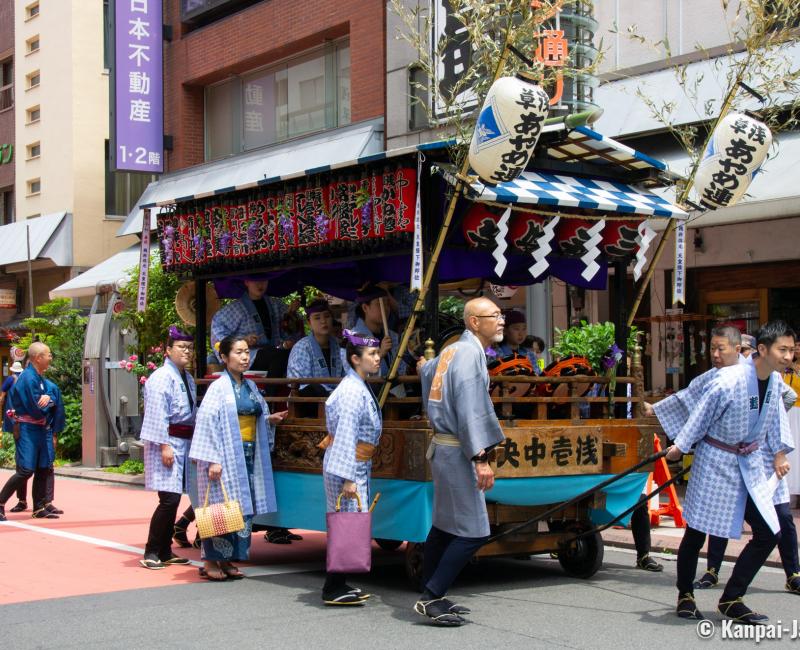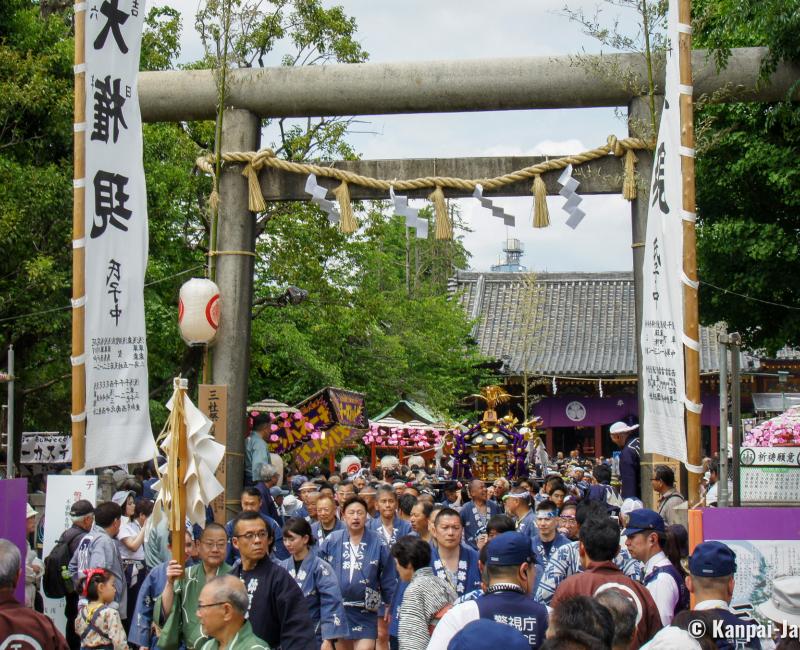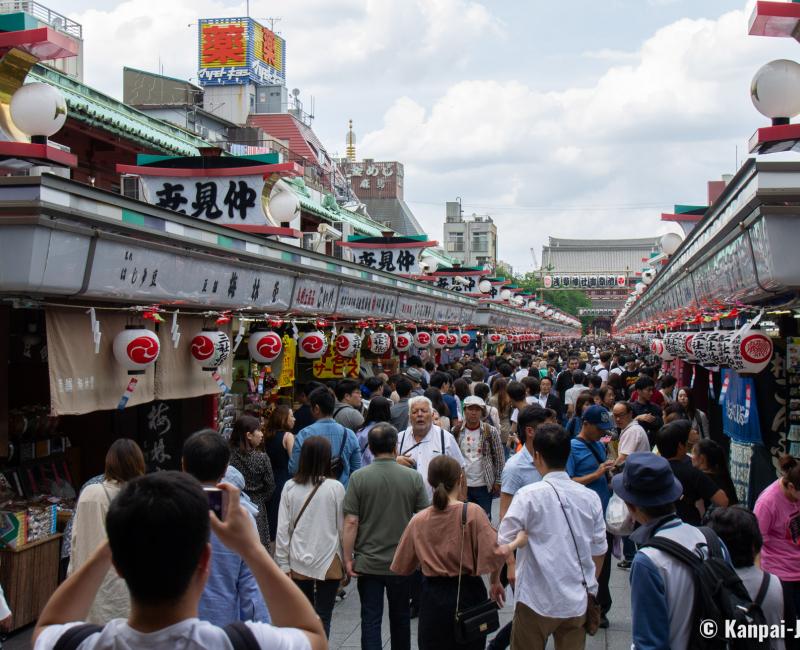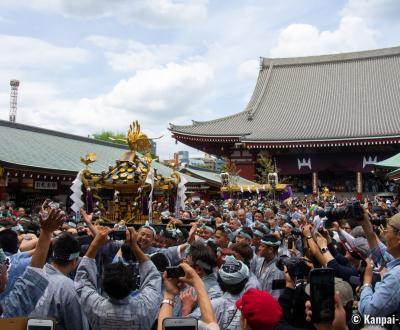Sanja Matsuri
Asakusa’s Great Spring Festival
Sanja Matsuri is a great Shinto festival taking place each year on the third weekend of May, in Asakusa district in Tokyo. Since former Edo, it has been one of the 3 most important Shinto celebrations and still gathers crowds around Asakusa-jinja and Senso-ji to cheer on the mikoshi carriers who parade to the sound of traditional music.
The present days’ Sanja Matsuri festival is related to Asakusa-jinja shrine, next to Senso-ji temple: the two places of worship share grounds and history. This Shinto event celebrates three men who have been deified as kami, and who were the founders of Senso-ji, a Buddhist temple built to honor Bodhisattva Kannon.

A return to the past
Sanja Matsuri’s ambiance reminds of the Golden Age of Edo period (1603 – 1868). As a true embodiment of the former lower city Shitamachi, the streets of Asakusa neighborhood are bustling with animations and noises in the same way as in the times when they were ruled merchants and artisans.
People who carry the mikoshi portable shrines have donned their festival attires and picnic on the sidewalks before gathering and taking their place in the procession. Small ambulant orchestras rally musicians: flute and taiko drums players of folkloric music. Visitors are delighted by the relaxed atmosphere and stroll in the streets from animations to shops. Many families with young children participate in the matsuri or just come to watch it.

A three days festival over the weekend
The celebrations start as soon as Friday afternoon, with Daigyoretsu, a first parade on Asakusa’s Yanagi-dori avenue, with participants donning Edo period style clothing. Shinto priests, as well as local celebrities, geisha, musicians and traditional dancers succeed one another for a very lively opening day. At the end of the afternoon, the first mikoshi portable shrines emerge from the shrine.
On Saturday, the grand parade starts at noon with a hundred of secondary mikoshi, reprensenting Asakusa’s 44 districts. The highlight is placed in Senso-ji and Asakusa-jinja’s grounds where onlookers gather in mass to take pictures with their camera or smartphones while enjoying the show and the collective enthusiasm. Food stalls established for the occasion provide food and drinks. Once they have been blessed at the shrine, the mikoshi altars return to their respective districts.
On Sunday, the last day of the festival, is the parade of the three main mikoshi, simply called Ichinomiya, Ninomiya and Sannomiya. Celebrations start at sunrise and end at sunset, when the holy palanquins definitely come back to Asakusa-jinja. It is also the day where chances are the highest to encounter yakuza, who also participate in the carrying of the large mikoshi shrines. They showcase their famous and wonderful irezumi tattoos, barely hidden by their happi jacket as they are not supposed to flash them around.

Each year, Sanja Matsuri attracts nearly two million visitors, Japanese onlookers as well as foreign tourists. At this time of the year, the warm spring ends and leaves way to the hot and humid summer. The temperatures are still pleasant and encourage Japanese people into wearing beautiful and sophisticated yukata.

